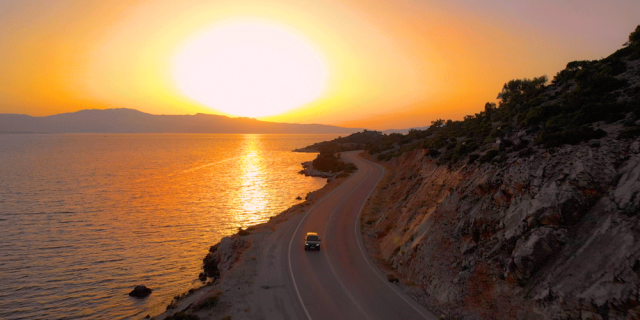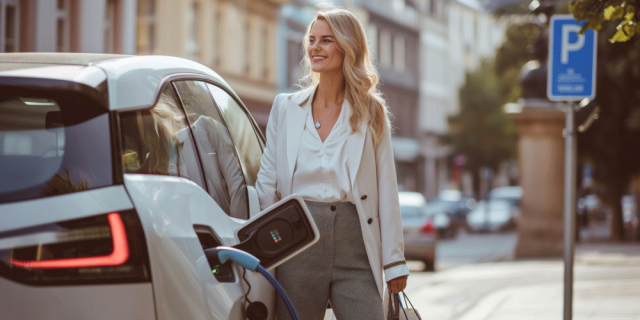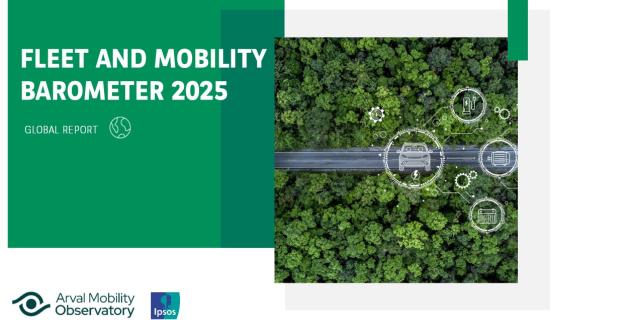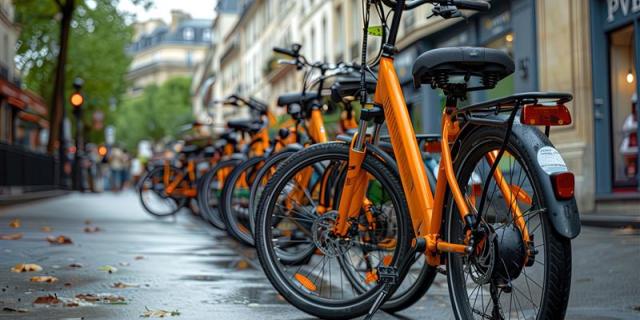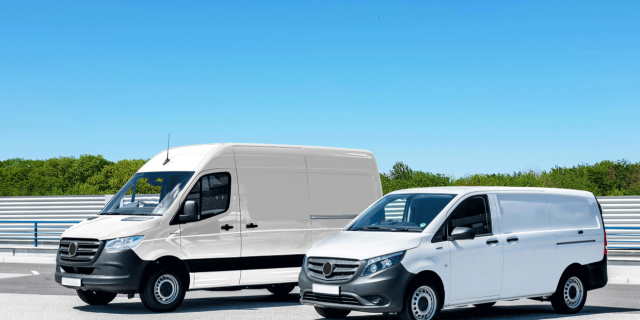
Our World Mobility Tour: Oslo, The Electric Vehicle Capital of the world
Paris, 20th of September 2021
The next stop in our World Mobility Tour is Oslo, often referred to as the EV capital of the world.
Our discussion with Sture Portvik, the Manager for Electro mobility of the City of Oslo, enables us to discover the strategy of this city regarding all aspects of mobility.
Arval Mobility Observatory: What has been the evolution of mobility in the city during the last 10 years? What targets do you now look to achieve and how do you address these challenges?
Sture Portvik: Oslo has set some highly ambitious goals, including an emission reduction of 95% by 2030. 50% of Oslo emissions come from the transport sector, which has been reduced by 20% during the last 5 years. In 2008, the City Parliament in Oslo adopted “a ten-point plan” to reduce CO2 emissions, of which the large-scale introduction of EVs plays a major part. During the last years, many of Oslo’s initiatives have focused on reducing Green House Gas (GHG) emissions by reducing vehicle access and incentivizing zero-emission vehicle adoption for personal and commercial vehicle use. The City added 576 charge points for EVs last year, has created exemptions on toll roads, and has allowed EVs to use restricted-access vehicle lanes. We are in a good track to decrease emissions. Today, the city’s heating system is powered by 100% renewable hydropower energy, so it is zero emission.
What is the mobility mix used to commute every day?
More and more people are using public transport. 70% of commuting journeys are done by public transport. Public transport is our priority. We have 1 800 buses in Oslo and 38% of these are EV. The target is to have only zero emission public transportation from 2028 (trams, metro, buses, ferries etc.)
We want to stimulate people to use cycling which represented 8% of journeys before the pandemic. The goal is to double it within one to two years. We have invested a lot of money to develop bicycle lanes, which are secure and can be used even during the winter period. The investment in cycling and public transport is funded by the City; 95% of which is coming from the toll roads. The use of private cars in the city helps us finance the cycling lanes. And cycling has many advantages, one of them being good for people’s health!
What are the different mobility solutions available in Oslo? How do you promote them?
In Oslo, there are 10 different car-sharing companies with different business models: for example, you can rent your private car. Various car sharing mobility schemes provide fleets of electric vehicles that can be found, reserved and unlocked via an app on your phone. This reduces the need for privately-owned cars in the city and supplements public transport. This has helped reduce traffic congestion in the city by 5% in one year and still counting.
You can find e-scooters everywhere in the city. Six or seven private companies have developed their services in Oslo. But also shared bike companies. There are 250 stations throughout the city.
What is the place of cars in the city? Moreover, what are your targets?
The goal is to reduce the use of the car by 20% within 2 years; a target that we have already achieved. Private car use is dropping dramatically. The reasons are the following:
- toll road pricing is very expensive. It is more expensive to pass through a zone during rush hour;
- it is more expensive to pass through a zone with a diesel vehicle than with a gasoline vehicle. And it is even cheaper with an electric vehicle.
- The toll points in Oslo are organized in three rings. At the outermost ring, you are only charged on your way into the city. At the two inner rings, you have to pay each time you pass a toll point.
Do you have any target in terms of vehicle engines? What about electric and hydrogen vehicles?
The share of EVs (63%) and Plug-in hybrids (16%) sales in Oslo reached 79% in 2020, and it continues to increase. Three out of four vehicles sold are now electrified. We believe that hydrogen is also part of the solution, if it is clean hydrogen. It is especially part of the solution for big trucks; we have one hydrogen station in the city. Now we focus on vans, commercial vehicles and taxis. From 2024, all taxis must be zero emission. Therefore, we need to ensure we have enough electric vehicles chargers available and we are working on different projects. There are many subsidy schemes available including for home charging.
How do you support the development of these solutions in terms of infrastructure?
The city has 2 100 public chargers and 300 fast chargers to support our drivers of electrified vehicles. It is very important that national, regional and local policies and incentives are all pulling in the same direction. We are all working towards the same goal: to reach zero emission.
When purchasing a zero emission vehicle, there are (is) no purchasing tax and VAT (private and commercial vehicles). And support schemes to assist in the purchase of zero emission taxis, vans, trucks and construction machineries have been implemented.
From 2025, only zero emission vehicles can be used for public deliveries up to 3.5 ton and 2030 for over 3.5 ton. We have implemented many advantages for users of zero emission vehicles, such as free or subsidized public parking, electricity, toll roads, ferries and tunnels. Zero emission vehicles are also permitted, subject to local restrictions, to use the bus line.
Zero emission zones have or will be implemented: the City Centre has been car free since 2018 (inside Ring 1), and zero emission zones will be introduced from 2025 (inside Ring 2) and from 2028 (inside Ring 3).
Last but not least, 30 % of all Oslo citizens do not have a dedicated parking place. In 2019-2020, the City of Oslo facilitated 40 000 new charging points in the city through a grants scheme for private citizens and businesses. This is by far the most cost efficient solution for the City (average 1000 dollars per charging point).
Which Internet of Things (IoT) solutions have you developed? Could you explain why?
There are a number of intelligent traffic lights in the city that are programmed to give priority to public transportation. We are looking into the possibility to use AI (Artificial Intelligence) to define how to deliver charging services in a more efficient way and by developing systems where customers can charge when the prices are the best for them.
Last April we tested autonomous buses in real traffic in Oslo. Like in most other European cities, we are looking at all the smart things that are available and launching interesting pilots with the cooperation of national road authorities.
What is your policy in terms of open data?
We want to open our system but we need to do so in a proper way. Everything needs to be clear and done in a correct way respecting GDPR regulations.
What are your plans in terms of Mobility as a Service?
Our public transport service has developed an app that includes more and more services; for example bikes are now included. You can pay using the app and you can get information for Public transport services. I think that the Maas app with all services will come from the private sector.
Following the COVID 19 pandemic, do you see any significant change regarding the behaviours of the people of Oslo with regard to mobility?
People are scared to use Public Transport, which has resulted in a reduction in usage of 40% during the pandemic. However, we have to highlight the fact that more and more people are working from home and the usage of private car and cycling has increased since the beginning of the pandemic. Nevertheless, it is still too early to see the full picture.
How do you see the mobility evolution in the coming 10 years?
Our national goals are the following:
• 100 % of new passenger cars sold to be electric within 2025
• 100 % of new vans sold to be electric within 2025
• 100 % of new heavy vans and trucks sold to be electric within 2030
• 50 % of new heavy trucks and long-distance trailers sold to be electric or hydrogen within 2030
• 100 % of the city busses to be electric within 2025
Public transport will continue to increase in the future. We still have a challenge when it comes to the electrification of commercial vehicles. Indeed, more and more people are buying online and this situation creates some new challenges in terms of logistics. It is key that we meet this challenge to enable us to reduce emissions in the future.
We have a project for the area inside ring 2 that from 2024 all cars should be zero emission; this should be validated soon. The city center will be completely car free from 2025 and from 2030 for vehicles over 3.5 T.
Concerning public tenders, the city will set the requirement that only zero emission vehicles will be allowed for public deliveries from 2025 (up to 3.5 ton) and 2030 (over 3.5 ton). Even if the company is collecting our waste!
In conclusion, what are the key components for a city to reach this status?
National and regional goals are the same. We are all trying to reach the same goal: zero emission.
In brief
Oslo main figures
- Population: 692 600 inhabitants
- Metro: six metro lines, 101 stations and 85KM of track
- Buses: 1 800 buses
- Bikes: 250 stations


